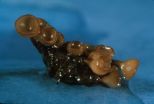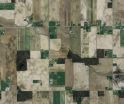(Press-News.org) Software downloaded during a routine office visit cuts the risk of inappropriate shocks by 50 percent for patients with implantable cardioverter defibrillators (ICD), according to research reported in Circulation: Journal of the American Heart Association.
"Hundreds of patients have been saved from unnecessary shocks by software that is safe and can be painlessly downloaded in one minute during a standard defibrillator check," said Charles D. Swerdlow, M.D., lead author of the study and a cardiac electrophysiologist at the Cedars Sinai Heart Institute in Los Angeles and Clinical Professor of Medicine at the University of California, Los Angeles.
Implanted defibrillators monitor the heart's electrical activity and deliver a shock to reset the heart to a normal rhythm if the pulse becomes too rapid and unable to sustain life. But if the lead wires that connect the device to the heart muscle break, the defibrillator may interpret rapid electrical signals caused by the fracture as coming from the heart — delivering one or more unnecessary and often painful shocks, Swerdlow said.
Although all leads can fracture, the most widely sold model — the Sprint Fidelis ®, used with many different defibrillator designs and removed from the market in October 2007 — had a much higher rate of breaks and inappropriate shocks. Downloadable Lead Integrity Alert (LIA) software monitors Fidelis leads for evidence of suspicious electrical signals, alerting the patient and recalibrating the device to make a shock less likely if a fracture is suspected, Swerdlow said.
"You don't wait to upgrade your operating system until you buy a new home computer, but prior to this people only got new software for defibrillators when the batteries ran low and they underwent surgery to implant a new device," Swerdlow said.
In the prospective study, researchers compared the experience of patients prior to their undergoing surgery to replace fractured leads, including 213 who had received standard daily monitoring and 213 monitored with the addition of the downloadable LIA.
The researchers found:
One or more inappropriate shocks were delivered to 70 percent of the patients who received standard monitoring, but only 38 percent of the patients with LIA (a 46 percent reduction in risk).
Five or more inappropriate shocks were delivered to 50 percent of the patients who received standard monitoring, but only 25 percent of patients with LIA (a 50 percent reduction in risk).
72 percent of patients with LIA had no inappropriate shock, or had at least three days warning prior to an inappropriate shock, whereas this was observed in only 50 percent of those who received standard monitoring.
"One year after LIA was released for download by physicians into patients' ICDs, 30 percent of patients undergoing remote monitoring had not had the software downloaded," Swerdlow said. "If your doctor hasn't done it yet, it can still be downloaded safely and painlessly."
The study is the first to demonstrate that the downloadable LIA software dramatically decreases the chance of unnecessary shocks in real patients. The results reveal the possibility of making other improvements to devices while they're implanted, researchers said.
About 114,000 inpatient implantable defibrillators procedures were performed in 2006 in the United States, according to the American Heart Association.
INFORMATION:
Co-authors are: Bruce D. Gunderson, M.S.; Kevin T. Ousdigian, M.S.; Athula Abeyratne, Ph.D.; Haresh Sachanandani, M.S.; and Kenneth A. Ellenbogen, M.D. Author disclosures are on the manuscript.
Medtronic, Inc., an ICD manufacturer, funded the study.
Statements and conclusions of study authors published in American Heart Association scientific journals are solely those of the study authors and do not necessarily reflect the association's policy or position. The association makes no representation or guarantee as to their accuracy or reliability. The association receives funding primarily from individuals; foundations and corporations (including pharmaceutical, device manufacturers and other companies) also make donations and fund specific association programs and events. The association has strict policies to prevent these relationships from influencing the science content. Revenues from pharmaceutical and device corporations are available at www.americanheart.org/corporatefunding.
Additional resources:
Implantable Cardioverter Defibrillator (ICD) Animation - http://www.americanheart.org/presenter.jhtml?identifier=3057242
Downloadable stock footage, animation, and our image gallery are located at www.heart.org/news under Multimedia.
Stay up to date on the latest news from American Heart Association scientific meetings, including Scientific Sessions 2010, by following us at www.twitter.com/heartnews.
We will be tweeting from the conference using hashtag #AHA10News.
END
Using data from more than 270,000 hospital stroke admissions, scientists have identified how to predict which patients are at greatest risk of dying in the hospital after stroke. Before their study, well validated models to predict in-hospital death risk after stroke were lacking, the researchers reported in Circulation: Journal of the American Heart Association.
"A mortality risk assessment tool for hospitalized stroke patients is important to clinicians, hospitals and patients," said Eric E. Smith, M.D., M.P.H., lead author of the study and assistant professor of neurology ...
VIDEO:
In a few tenths of a second, Sclerotinia expels hundreds of thousands of spores in a plume that can rise 20 cm, much higher than any single spore by itself....
Click here for more information.
Long before geese started flying in chevron formation or cyclists learned the value of drafting, fungi discovered an aerodynamic way to reduce drag on their spores so as to spread them as high and as far as possible.
One fungus, the destructive Sclerotinia sclerotiorum, ...
In a paper published this week in the Proceedings of the National Academy of Sciences, Cary Institute aquatic ecologist Dr. Emma Rosi-Marshall and colleagues report that streams throughout the Midwestern Corn Belt are receiving insecticidal proteins that originate from adjacent genetically modified crops. The protein enters streams through runoff and when corn leaves, stalks, and plant parts are washed into stream channels.
Genetically-modified plants are a mainstay of large-scale agriculture in the American Midwest, where corn is a dominant crop. In 2009, more than ...
Burness Communications
Godwin Atser
g.atser@cgiar.org
234-803-443-0027
CGIAR
Scientists arrive in Senegal to give African hunger a black eye
At the World Cowpea Research Conference, crop experts embrace one of agriculture's oldest legumes -- prized for protein and resilience to hot, dry climates -- as food for people, livestock and astronauts
This release is available in French.
DAKAR, SENEGAL (27 September 2010)—A long neglected crop with the potential to halt hunger for millions in Africa, sustain the livestock revolution underway in developing countries, ...
Researchers in the Midwest are developing microelectronic circuitry to guide the growth of axons in a brain damaged by an exploding bomb, car crash or stroke. The goal is to rewire the brain connectivity and bypass the region damaged by trauma, in order to restore normal behavior and movement.
Pedram Mohseni, a professor of electrical engineering and computer science at Case Western Reserve University, and Randolph J. Nudo, a professor of molecular and integrative physiology at Kansas University Medical Center, believe repeated communications between distant neurons in ...
Baby boomers appear to be driving a dramatic rise in suicide rates among middle-aged people, a new study finds.
The suicide rate for middle-aged people – a group considered relatively protected from suicide and with historically stable suicide rates – took an upward jump between 1999 and 2005, according to research by sociologists Ellen Idler of Emory University and Julie Phillips of Rutgers University.
Their study has been published in the September/October issue of the journal Public Health Reports.
"The findings are disturbing, because they're a reversal of a long-standing ...
A report presented today by Health and Consumer Policy Commissioner John Dalli to the Agriculture Council concludes that specific measures relating to storing and the application of isolation distances can help limit or avoid the co-mingling of genetically modified (GM) maize with conventional and organic maize. In particular, the Best Practice Document, prepared by the European Coexistence Bureau (ECoB) and published by the European Commission's Joint Research Centre (JRC), notes that storing seeds adequately and applying spatial isolation are the best ways to limit or ...
TORONTO, Sept. 27, 2010 − Homeless young people are victims of crime at rates that society would consider unacceptable for any other group, according to a new report by researchers at York University and the University of Guelph.
The report, Surviving Crime and Violence: Street Youth and Victimization in Toronto, highlights the degree to which it is street youth themselves − often perceived as delinquent and dangerous − who are vulnerable to crime and violence.
"The very people we are taught to fear are the ones who are most at risk," said Professor ...
Researchers have long held that there are steps that can be taken to make brainstorming sessions more productive. New research from North Carolina State University finds that these recommendations actually do contribute to success when applied in real-world business environments.
"Previous research has laid out best practices that are conducive to brainstorming, or group decision making, and we wanted to see whether using those practices makes a difference in the real world," says Dr. Joe Brazel, associate professor of accounting at NC State and co-author of a paper describing ...
The appearance of a spot of light on the retina causes sudden activation of millions of neurons in the brain within tenths of milliseconds. At the first cortical processing stage, the primary visual cortex, each neuron thereby receives thousands of inputs from both close neighbors and further distant neurons, and also sends-out an equal amount of output to others.
During the recent decades, individual characteristics of these widespread network connections and the specific transfer characteristics of single neurons have been widely derived. However, a coherent population ...

